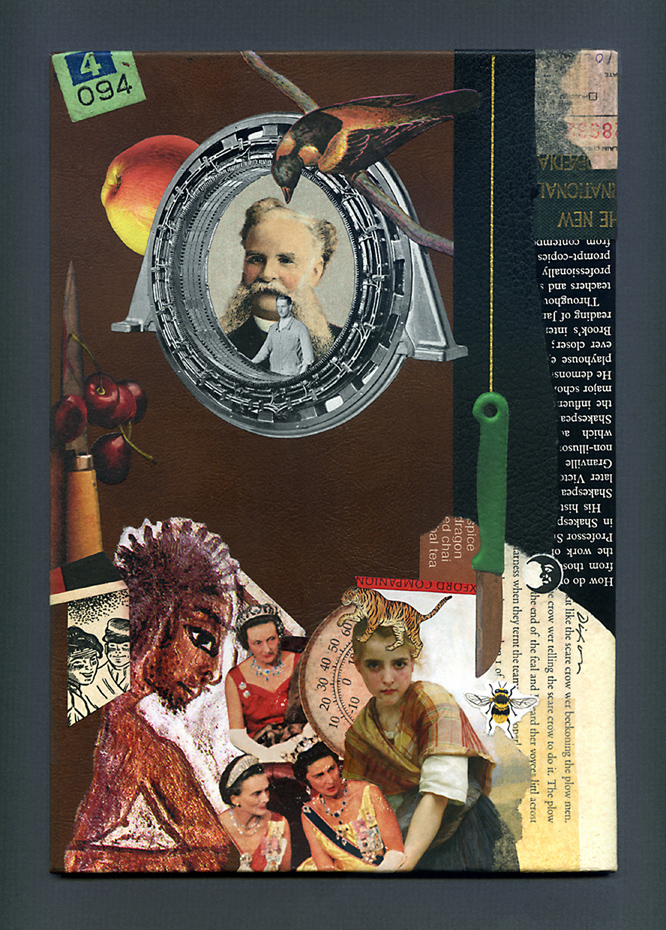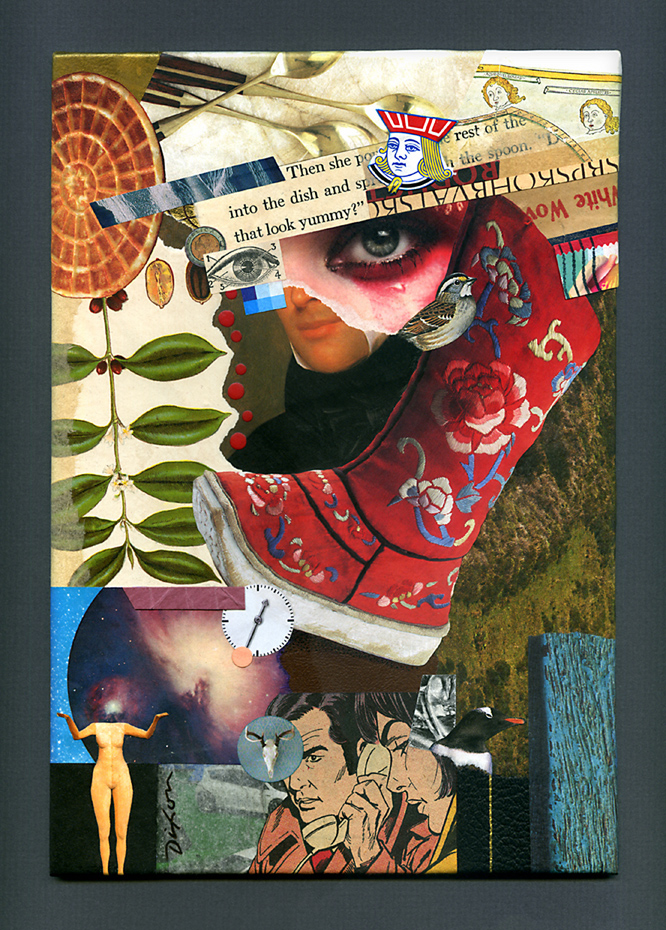“A cold start is a hard start.”
— Stephen King
There must be a lot of ruined publications out there, because the “collage on book cover” has become a staple of the medium in recent years. I happen to live across the street from a public library, and I’ve been known to peek into their recycling bins from time to time. If the decisions of libraries are any indication, cast-off books will supply the needs of artists for quite a while, and I’m not talking about just covers. Perhaps the societal move from print to digital has in some measure fueled the explosion of collage worldwide. Much could be said about that alone, but let’s stay focused on the book cover.
As a substrate, it has all the aspects for which a collage artist is looking — strength, durability, unusual textures, and it often provides other desirable features, such as embossing, foil stamping, plus interesting typography that need not be superimposed. I will generally wrap my collage ingredients around the dimensions of the working surface, and this adds an “artifact” quality to the creation, because it takes on the perceptual properties of an actual object. Book covers can lend themselves to this effect.
For me, the book cover also triggers its own unique intuitive responses — unconscious associations that will “jump-start” the process in a more experimental way than the typical “blank canvas,” which invites more initial calculation. Any component of a publication has the vestiges of an anonymous designer’s preexisting sensibility. There is already a context, perhaps a pictorial or narrative allusion, but, at minimum, a tactile or color stimulus. It is not a cold origin.
There are times when a collage at the scale of a book cover will capture a microcosm of “the moment,” whether or not we can interpret all the elements at a rational level, whether or not we can ascribe “meaning” to it. I see many collage artworks that communicate little beyond “disorganization” or “chaos.” But there are others that probe deeper to the heart of something more significant, and are the result of an artistic intent at some level of mindfulness, even if it has not derived from a series of choices that involve an outer, deliberative awareness. Then again, it is dangerous for me to generalize about anything. Each creative process is distinctive. Discover yours!

Threshold Of Control
collage miniature on book cover by J A Dixon
7 x 10 inches
Purchase this artwork!
This Side of Recklessness
collage miniature on book cover by J A Dixon
7 x 10 inches
Purchase this artwork!

Hi! I’m always happy to see the promotion of collage as a legitimate art form, and you’re doing an excellent job of that. I wasn’t aware that making collages on book covers was becoming so trendy! In my scavenging for materials, I try to stick mostly with books that are already falling apart. As a life-long avid reader, I find it difficult to cut up a book that’s in good condition, but I will if there’s a compelling reason. I think book covers make a wonderful substrate, and I find myself frequently incorporating them as part of the piece itself. Also, I wanted to let you know how much I admire your work; I’m especially taken with Threshold of Control. Keep up the good work with the blog!
Thank you, Sharmon. As with all my collage ingredients, I limit my use of book material to items that would otherwise be processed for recycling or end up in a landfill. Featuring other collage artists working with books would be a good thing for me to do here. I hope you dig through some of my entries from the last few years, so we can continue to have a dialogue. I am glad to know about your work and your sharmondavidson.com website.